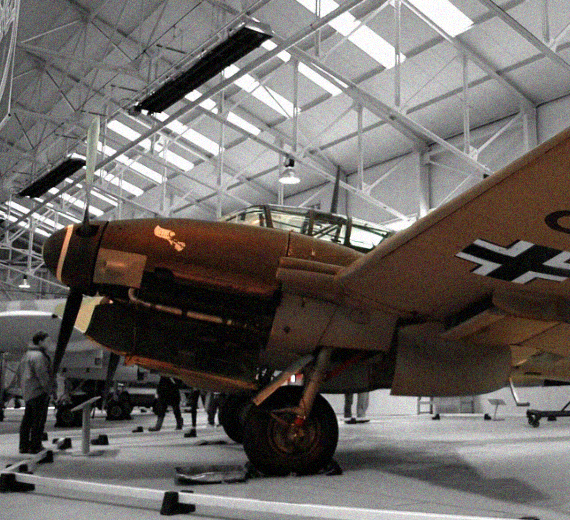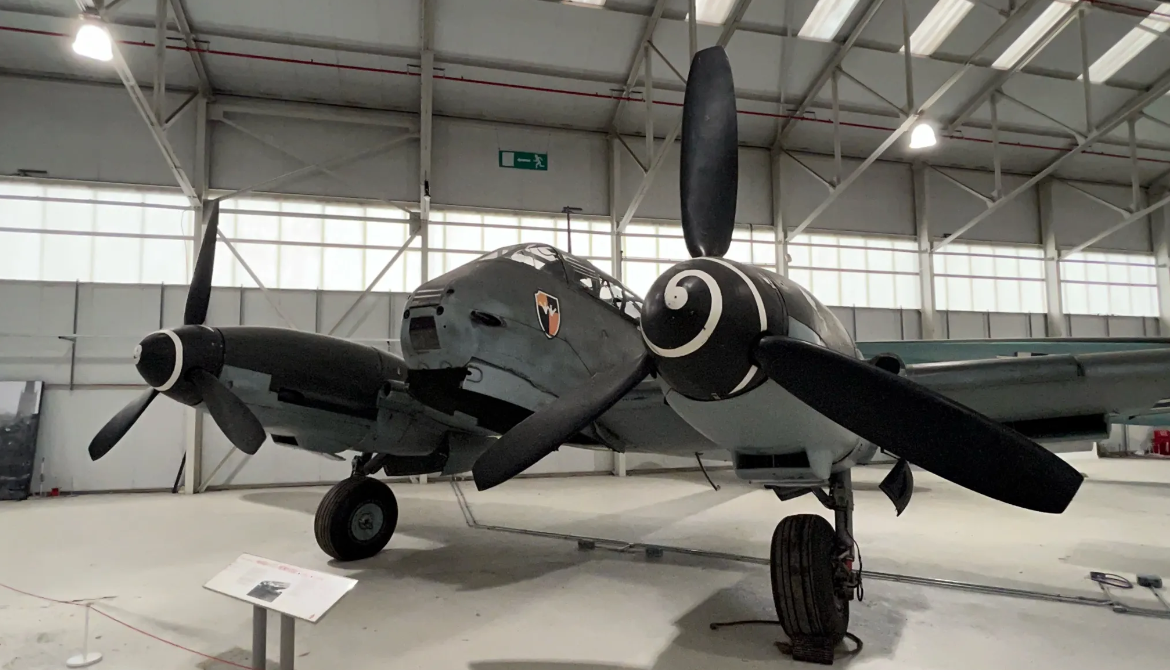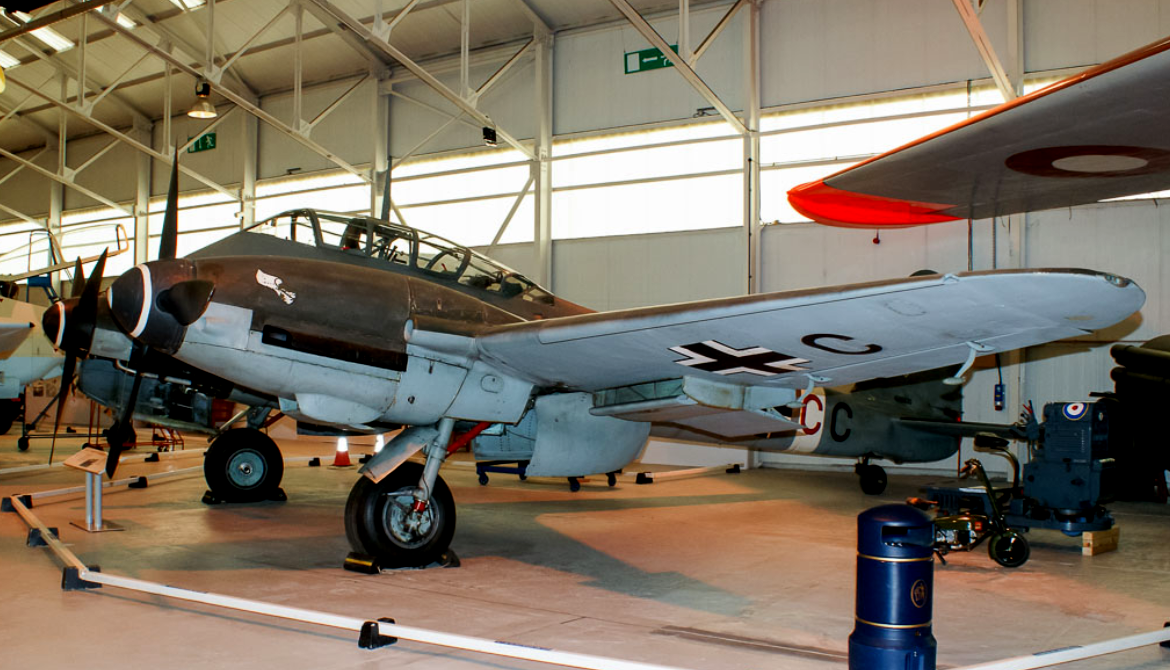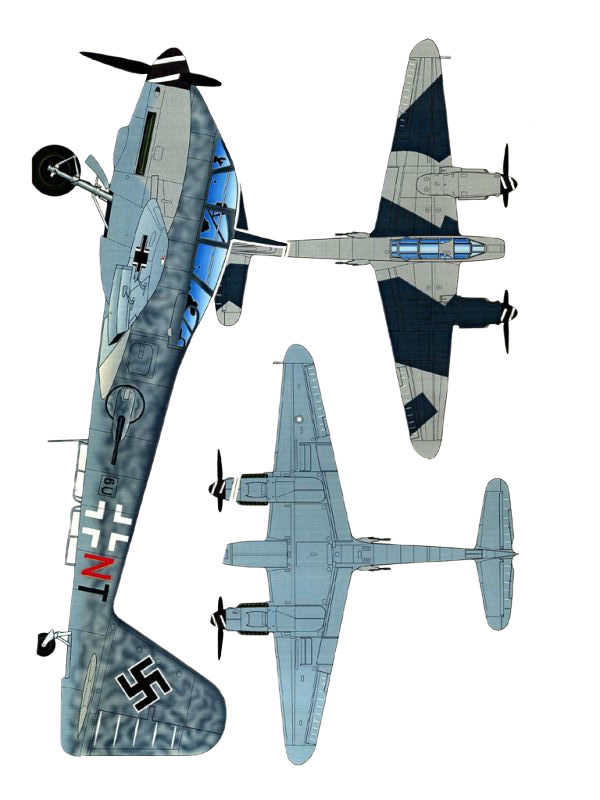Messerschmitt Me 410 Hornisse (Hornet)
Role Heavy fighter, fighter-bomber
Manufacturer Messerschmitt
First flight 14 March 1942
Introduction 1943
Retired 1945
Primary users Luftwaffe
Hungarian Air Force
Produced May 1943-August 1944
Number built 1,189
Developed from Messerschmitt Me 210
.
History Bayerische Flugzeugwerke (BFW)
Messerschmitt AG
Messerschmitt Me 410 Hornisse (Hornet)
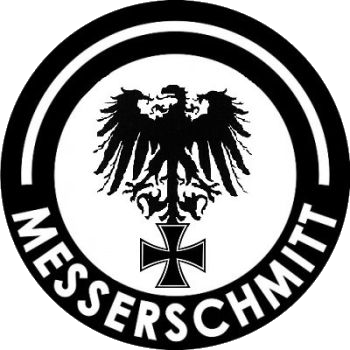
The Messerschmitt Me 410 Hornisse (Hornet) was a German heavy fighter and Schnellbomber used by the Luftwaffe during World War II. Though an incremental improvement of the Me 210, it had a new wing plan, longer fuselage and engines of greater power. The changes were significant enough for the aircraft to be renamed the Me 410.
Development of the Me 210 had been under way since 1939 but the aircraft proved unstable and was never considered for full-scale production. Modifications to the layout produced the Me 210C and 210D, which proved somewhat superior. As studies progressed on the Me 210D, and with a separate parallel attempt to improve upon the 210 with the Messerschmitt Me 310 in the second half of 1943—which provided almost no aerodynamic improvement over the 210's risky handling qualities—it was instead decided to introduce a new model, the Me 410.
Operational history


The Me 410 night bomber proved to be an elusive target for the RAF night fighters. The first unit to operate over the UK was V./KG 2, which lost its first Me 410 on the night of 13 – 14 July 1943, when it was shot down by a de Havilland Mosquito of No. 85 Squadron RAF.
The Me 410 was also used as a bomber destroyer against the daylight bomber formations of the USAAF , upgraded with Umrüst-Bausätze factory conversion kits, all bearing a /U suffix, for the design—these suffixes could vary in meaning between subtypes. As one example, the earlier Me 410 A-1/U1 designation signified a camera-fitting in the under-nose ordnance bay for reconnaissance use (as the A-3 was meant to do from its start), while the Me 410 B-2/U1 designation signified a mount of a pair of the long barreled, 30 mm MK 103 cannon in the undernose ordnance bay. The /U2 suffix designated a fitment of two additional 20 mm MG 151/20 cannons in the under-nose ordnance bay instead—the A-1/U4 subtype fitted the massive, 540-kilogram (1,190 lb) Bordkanone series 50 mm (2 in) BK 5 cannon , loaded with 21 rounds in the same under-nose ordnance bay in place of either the /U1's cameras or MK 103s, or the /U2's added pair of MG 151/20 autocannon . For breaking up the bomber formations, many Me 410s also had four underwing tubular launchers, two per wing panel , firing converted 21 cm (8 in) Werfer-Granate 21 infantry barrage rockets. Two Geschwader , Zerstörergeschwader 26 and 76 , were thus equipped with the Me 410 by late 1943.0
KmCeiling
0
KmCombat RANGE
0
Km/hAircraft Speed
0
Max Crew
Photo Gallery
Bayerische Flugzeugwerke (BFW)
Messerschmitt
Messerschmitt Me 410 Hornisse (Hornet)


Bayerische Flugzeugwerke (BFW)
Messerschmitt
Messerschmitt Me 410 Hornisse (Hornet)
General Info
-
-
- Crew: 2
- Length: 12.484 m (40 ft 11.5 in)
- Wingspan: 16.3513 m
- Height: 4.280 m (14 ft 0.5 in)
- Wing area: 36.2031 m2
-
Powerplant
-
- Empty weight: 7,518 kg
- Gross weight: 9,651 kg
- Fuel capacity: 550 imp gal (660 US gal; 2,500 L) in four wing tanks
- Powerplant: 2 × Daimler-Benz DB 603A V-12 inverted liquid-cooled piston engines, 1,290 kW (1,750 hp) each for take-off
-
-
-
- 1,360 kW (1,850 PS) at 2,100 m (6,890 ft)
- 1,195 kW (1,625 PS) at 5,700 m (18,700 ft)
-
-
- Propellers: 3-bladed VDM constant-speed propeller
-
Performance
-
-
- Maximum speed: 507 km/h (315 mph, 274 kn) at sea level, 624 km/h (388 mph; 337 kn) at 6,700 m (21,980 ft)
- Cruise speed: 587 km/h
- Range: 1,200 km (750 mi, 650 nmi) at maximum continuous cruise speed, 1,690 km (1,050 mi) at economical cruise speed
- Ferry range: 2,300 km (1,400 mi,
- Service ceiling: 10,000 m
- Time to altitude: 6,000 m in 10 minut
Armament
-
Guns: ** 2 × 7.92 mm (0.31 in) MG 17 machine guns with 1,000 rpg, firing forward
- 2 × 20 mm (0.79 in) MG 151/20 cannon with 350 rpg, firing forward
- 2 × 20 mm (0.79 in) MG 151/20 cannon with 250 rpg in the bomb bay, firing forward
- 2 × 13 mm (0.51 in) MG 131 machine guns with 500 rpg, each firing rearward from FDSL 131/1B remote-operated turret, one per side
- Rockets: 4 × 21 cm (8.3 in) Werfer-Granate 21 rockets
- Bombs: up to 1,000 kg (2,200 lb) of disposable stores[
.
Links to Youtube & Others
The first Bf 109As served in the Spanish Civil War. By September 1939, the Bf 109 had become the main fighter of the Luftwaffe, replacing the biplane fighters, and was instrumental in gaining air superiority for the Wehrmacht during the early stages of the war.
Messerschmitt Me 410 Hornisse (Hornet)
In February 1916, the south German engineering company MAN AG and several banks purchased the unprofitable aircraft builder Otto-Flugzeugwerke,
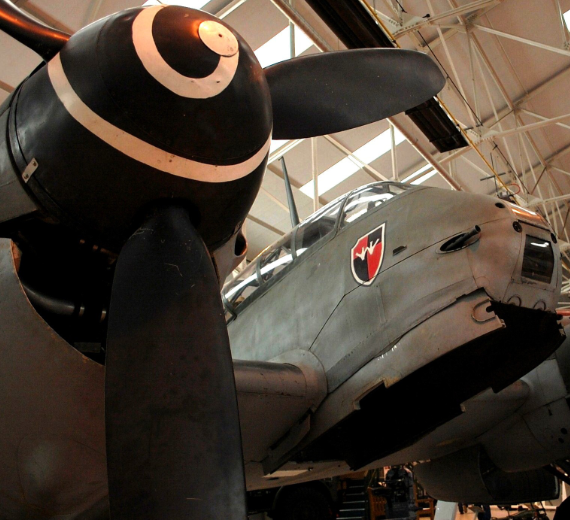
Youtube Link
The Messerschmitt Bf 109 is a German World War II fighter aircraft that was, along with the
Focke-Wulf Fw 190


